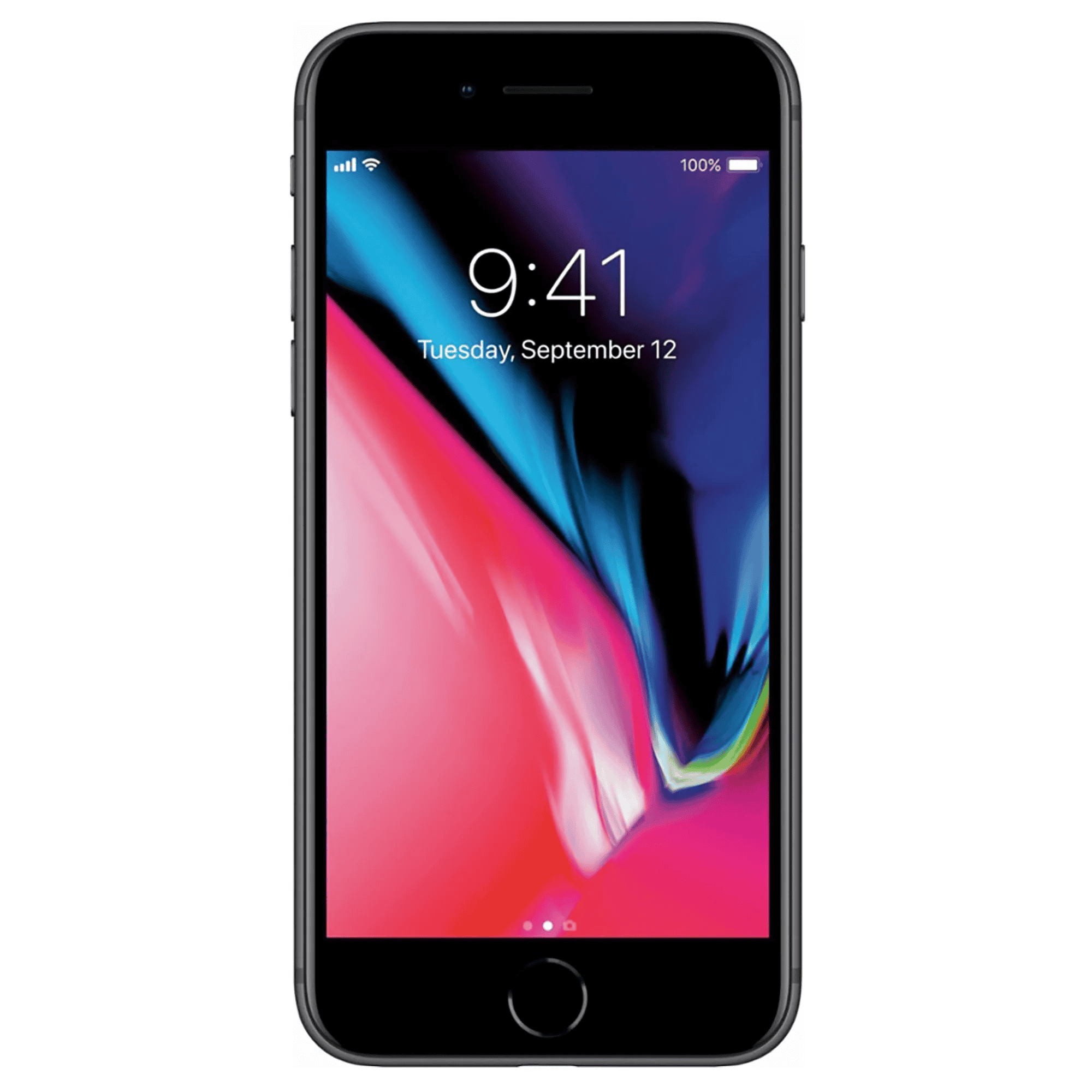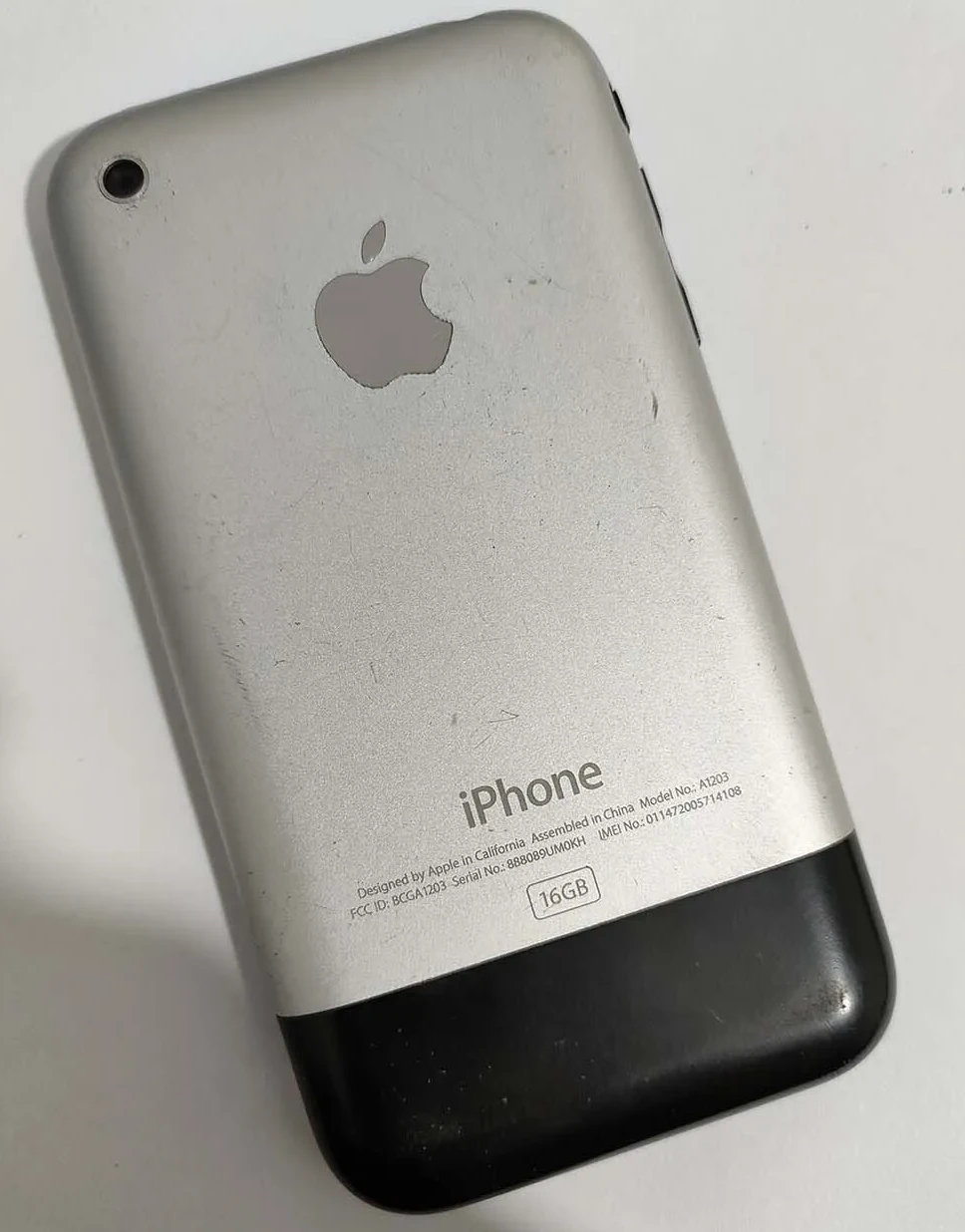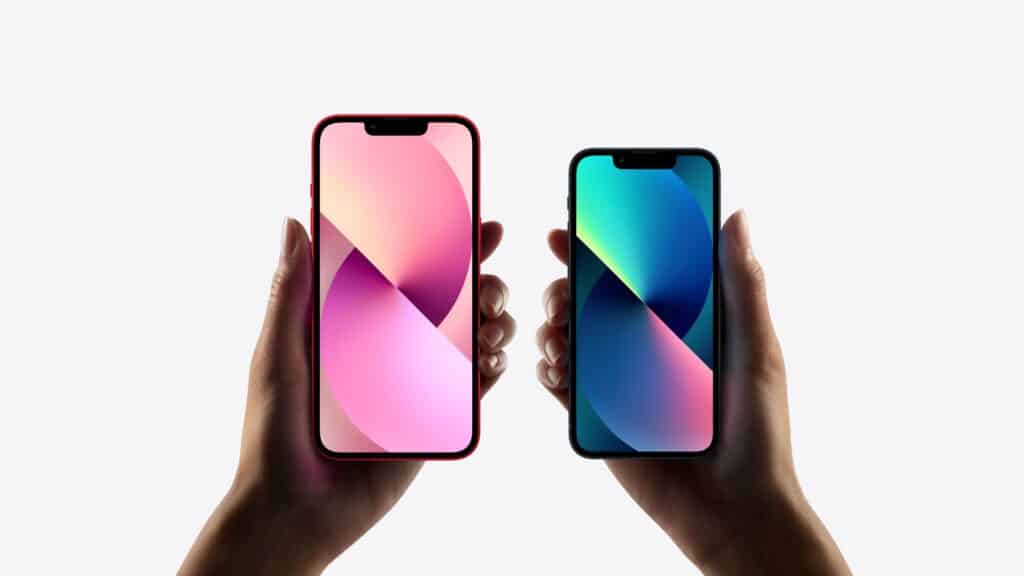The iPhone, introduced by Apple in 2007, has greatly impacted how people communicate, work, and entertain themselves. With each new model, Apple aims to improve the iPhone’s design, technology, and features to enhance the user experience. Over the years, Apple’s dedication to innovation has made the iPhone more than just a phone—it has become a cultural phenomenon and a symbol of modern technology.
36 Fun Facts About The iPhone
1. The original iPhone almost didn’t have a touchscreen
Early designs heavily focused on a physical click wheel, similar to the iPod.
2. “Purple” was the secret project codename for the first iPhone.
The development team even had a dedicated workspace called the “Purple Dorm.”
3. Time on Apple ads always shows 9:41 AM

This is a nod to the time Steve Jobs first unveiled the iPhone in 2007.
4. Samsung ironically manufactures many of the processors for iPhones.
The two companies are both fierce rivals and key partners.
5. Early iPhone prototypes could run a version of Mac OS X.
Apple experimented with shrinking down its desktop operating system.
6. A real magician helped design the iPhone’s iconic “slide to unlock” feature.
Reports indicate that Greg Christie, a longtime Apple engineer, is credited as the primary designer of the iPhone’s “slide to unlock” feature. He spearheaded the design of this iconic functionality on the device and collaborated with a magician to bring it to life.
7. Apple’s legal team patented the rectangular shape with rounded corners

This forced other early smartphone makers to find alternative designs.
8. For many years, the iPhone only worked with AT&T in the US.
It eventually expanded to other carriers to increase its market share.
9. The original iPhone didn’t have an App Store!
Apps were added in 2008 and changed the way we use phones forever. Some of the very first popular apps that helped drive the App Store’s success were Angry Birds, Facebook, Pandora.
10. The first iPhone cost $599 and only came with 4GB or 8GB of storage.
Now, storage options reach into the terabytes!
11. You can tell if an iMessage was sent to another iPhone by the bubble color
Blue bubbles = fellow iPhone, Green bubbles = Android or another service.
12. The iPhone was not the first smartphone.
Devices like the BlackBerry and Palm Treo had been around for years.
13. The first iPhone design sketch was by Apple’s former chief designer
Jonathan Ive famously drew the first designs on a napkin.
14. The iconic iPhone ringtone, “Marimba”, was created in GarageBand.
Dr. Gerhard Lengeling is the person who helped make the 25 original ringtones on iPhone, including Marimba.
15. Apple has sold over 2.4 billion iPhones since their introduction in 2007.
The iPhone is the best-selling smartphone of all time.
16. The most expensive iPhone case in the world costs over $2.7 Million
Made by ALEXANDER AMOSU, it’s made of gold and studded with diamonds.
17. Each year, more people browse the internet from their iPhones than on any desktop computer.
18. The “i” in iPhone originally stood for “internet”
Now it also represents concepts like “individual,” “instruct,” and “inspire.”
19. Siri was not originally an Apple creation
It was developed as a separate app and acquired by Apple in 2010.
20. There’s a hidden level tool within the iPhone’s compass app.
To access the level tool open the Compass app and swipe left
21. You can set a timer to automatically stop your music playing.
Perfect for falling asleep to tunes.
22. Over 28% of emails are now opened on the iPhone.
It’s estimated that 50-60% of email opens come from mobile devices, making it the top platform for email opens.
23. There are apps that can help you diagnose medical conditions.
WebMD, Epocrates, Prognosis: Your Diagnosis, Anatomi: Dermatology Diagnostics are some of the most popular.
24. There have been over 2.5 trillion photos taken on iPhones.
25. Your iPhone tracks your frequently visited locations
Uunless you turn it off.
26. You can customize the intensity of your iPhone’s flashlight.
27. The iPhone was named Time Magazine’s “Invention of the Year” in 2007.
28. Apple’s iconic earbuds were initially considered a design flaw
After release, however, they became a status symbol.
29. There are secret keyboard shortcuts on the iPhone for adding symbols and punctuation.
30. Holding down the “0” key on the iPhone keyboard types a degree symbol (°).
31. Your iPhone can work as a magnifying glass.
32. You can undo typing by shaking your iPhone.
33. There’s a hidden backspace key when using the iPhone calculator.
34. You can use the volume button to take a photo.
35. You can make the keyboard bigger on an iPhone by turning it horizontally.
36. You can control which apps have access to your camera, microphone, and location data.

Learn More About The iPhone
The evolution of the iPhone is marked by its aesthetic changes and technological advancements. With each iteration, Apple has meticulously shaped the iPhone’s functionality to cater to the growing demands of users. The company has successfully integrated a range of features such as high-resolution cameras, advanced processors, and sophisticated software, all within a sleek and sturdy design. This combination of elements ensures the iPhone remains at the forefront of the smartphone industry, providing users with a powerful and intuitive device.
The iPhone’s influence extends to its ecosystem, which includes a vast array of apps and services designed to work seamlessly with the device. This interconnectedness offers users a comprehensive mobile experience that blurs the lines between a phone and a personal computer. With each update, the iPhone continues to solidify its place as a leading-edge tool that supports various aspects of modern life.
Unearthing More iPhone Secrets
Here are some additions to make your “Fun & Amazing Facts About the iPhone” article even more comprehensive and engaging:
Expanding on Existing Facts
- Fact 9 (App Store): Some of the first popular apps that helped the App Store take off were Angry Birds, Facebook, and Pandora. Remember when those were brand new?
- Fact 16 (Expensive Case): That $100,000+ iPhone case is made by luxury designer Stuart Hughes. It’s crafted from solid gold and encrusted with diamonds.
- Fact 23 (Medical Apps): There are apps that can help detect signs of skin cancer, analyze moles, and even assess eye conditions. Always consult a doctor for a proper diagnosis, though!
- Fact 29 (Keyboard Shortcuts): Need an em dash (—)? Hold down the hyphen key. Want an ellipsis (…)? Hold down the period key. There are lots of handy shortcuts like these!
New Fun Facts
- Did you know that the iPhone’s camera sensor is actually made by Sony, one of Apple’s biggest competitors?
- When the first iPhone launched, it was only sold in the U.S. But that didn’t stop people from smuggling them into other countries and selling them for crazy high prices!
- The iPhone’s smooth touchscreen was inspired by technology developed way back in the 1970s at Xerox PARC.
- Siri, your helpful iPhone assistant, can understand and respond in over 20 languages. ¡Hola! Bonjour! Guten Tag!
- The iPhone’s camera is so good that it’s been used to film entire movies and TV shows. Can you imagine shooting a Hollywood blockbuster on a phone?
- iPhones have actually saved lives, thanks to features like Emergency SOS and the Health app. Technology can be a lifesaver!
- More people use their iPhones to take photos than any other camera. In fact, the iPhone is the most popular camera on Flickr.
- When you’re done with your old iPhone, don’t just throw it away! The iPhone is one of the most recycled electronic devices in the world.
Hidden Features
Your iPhone is full of surprises! Here are some hidden features you might not know about:
- Back Tap: You can set up shortcuts to launch apps or perform actions by double or triple tapping the back of your iPhone.
- Live Text: See some text in a photo you want to copy? With Live Text, you can simply select it and copy it, just like you would with typed text.
- Measure App: Turn your iPhone into a virtual tape measure! The Measure app uses augmented reality to help you measure objects and distances.
- Level Tool: Need to hang a picture? Open the Compass app and swipe left to access a handy level tool.
The iPhone in Pop Culture
The iPhone has become such a big part of our lives that it’s even made its way into movies, TV shows, and music. Here are a few examples:
- In the movie Chef, the main character uses an iPhone to build his food truck business and connect with his son.
- The TV show Modern Family often features the characters using iPhones to communicate, take photos, and navigate their daily lives.
- The song “iPhone” by Rico Nasty is all about the rapper’s love for her iPhone.
The Future of the iPhone
What’s next for the iPhone? Here are some rumors and predictions:
| Rumored Feature | Description |
|---|---|
| Foldable iPhone | Imagine an iPhone that folds in half! This could allow for larger screens in a more compact design. |
| Under-display Touch ID | This technology would embed the fingerprint sensor beneath the screen, eliminating the need for a Home button or notch. |
| Periscope Camera | This type of camera could offer significantly improved optical zoom capabilities. |
Key Takeaways
- The iPhone has been a transformative force in mobile technology since its launch.
- Apple’s focus on design and technology keeps the iPhone at the industry forefront.
- The device’s ecosystem offers a seamless and comprehensive user experience.
Evolution and Design
The iPhone has seen remarkable changes since its inception. This section tracks its journey from the revolutionary first model to its current sophisticated designs, exploring the influences and advances that mark each step.
Origins and Launch
The first iPhone, unveiled in 2007 by Steve Jobs at Macworld, was a breakthrough that defined the modern smartphone. This ground-breaking device combined a phone, an iPod, and internet communication equipment into one interface with a user-friendly design.
Design Philosophy
Apple’s design approach has consistently focused on simplicity and functionality. The iPhone’s minimalistic aesthetics, conceived by a team under the guidance of Steve Jobs, embody this principle, ensuring that the user experience stays at the forefront.
Hardware Progression
- First iPhone to iPhone 4: Saw initial enhancements in screen resolution and system performance.
- iPhone 5 to iPhone X: Included significant jumps in processor capabilities from the A6 to A11 Bionic chip, with each model becoming faster and more efficient.
- iPhone 13 Pro Max: Boasts the A15 Bionic chip, pushing the boundaries with improvements in processing power, battery life, and camera technology.
Software Milestones
The operating system, iOS, has evolved from the first iteration to iOS 16, introducing fundamental changes like the App Store in iOS 4, Siri in iOS 5, and continuous updates to security, functionality, and user interface.
Industry Influence
After the first iPhone release, smartphone competitors like Samsung and Google stepped up their game, leading to rapid advancements in the smartphone market. Apple’s innovations have often set the trend, influencing designs and features among all smartphone manufacturers.
Market Reception and Impact
Apple’s iPhone has dominated the market in terms of sales and popularity, with data from sources like Statista and Counterpoint Research reflecting its success. Its high sales figures continue to shape the smartphone industry, demonstrating the product’s strong market reception.
Rumors and Previews
News outlets such as The New York Times often report on the latest iPhone developments. As a new release approaches, rumors circulate about potential design changes, specs, and innovative features that keep consumers and the industry abuzz with expectations.
Technology and Features
The iPhone integrates advanced technology and features to offer a seamless user experience. It embodies high-performance components and a user-friendly interface with strong security measures.
Camera Systems
The iPhone boasts a multi-lens camera setup, usually including a wide, ultra-wide, and telephoto lens. The latest models, such as the iPhone 15, present a significant 48MP main camera capable of capturing high-quality images and videos. Technologies like portrait mode, designed to focus on the subject while blurring the background, enhance photographic experiences.
Performance
Powered by Apple-designed processors, iPhones deliver fast performance. These chips balance speed and efficiency, allowing users to run demanding applications and games smoothly. The performance gains are also a result of tightly integrated iOS software, optimized for the hardware.
User Interface and Accessibility
iOS, the operating system for iPhone, is known for its intuitive interface. Users of all ages find it straightforward to navigate through apps and settings. Accessibility features are abundant, with options for those who have visual, hearing, or physical motor conditions, ensuring everyone can use the device.
Security and Privacy
iPhones are built with security at their core. Features like Face ID and Touch ID provide secure and convenient ways to unlock the device using facial or fingerprint recognition. Encryption and security protocols protect personal data, and settings allow control over privacy permissions. Apps downloaded from the App Store are vetted for safety and integrity.
Interconnectivity
The iPhone works seamlessly with other Apple devices like Macs, iPads, and AirPods. Handoff capabilities let users start a task on one device and pick it up on another. iCloud syncs photos, documents, and more across devices, while AirDrop enables quick file transfers.
Additional Capabilities
iPhones offer various features, like Siri for voice-activated assistance and augmented reality experiences. The App Store provides access to millions of apps for endless functionality. Regular iOS updates bring in new features and keep the device up to date with the latest improvements.
Frequently Asked Questions
This section explores common inquiries related to the iPhone, clarifying points that often puzzle users and enthusiasts alike.
Who invented the iPhone?
The iPhone was created by Apple Inc., under the guidance of Steve Jobs, Apple’s co-founder, who introduced the device during a keynote address in January 2007.
What is the chronological list of iPhone models released?
Since 2007, Apple has introduced numerous iPhone models. Starting with the original iPhone, the series has progressed through the iPhone 3G, 3GS, 4, 4S, 5, 5C, 5S, 6, 6 Plus, 6S, 6S Plus, SE (1st generation), 7, 7 Plus, 8, 8 Plus, X, XR, XS, XS Max, 11, 11 Pro, 11 Pro Max, SE (2nd generation), 12, 12 Mini, 12 Pro, 12 Pro Max, 13, 13 Mini, 13 Pro, 13 Pro Max, 14, 14 Plus, 14 Pro, 14 Pro Max, 15, 15 Plus, 15 Pro, 15 Pro Max, 16, 16 Plus, 16 Pro, 16 Pro Max.
Which iPhone models are water-resistant or waterproof?
Starting with the iPhone 7 and 7 Plus, Apple introduced water and dust resistance, with subsequent models maintaining or improving upon this feature. They’re rated IP67 or IP68 under IEC standard 60529, though it’s important to note that resistance can decrease over time due to normal wear and not all water or liquid exposure is covered under warranty.
What distinguishes the iPhone from other smartphones?
iPhones tend to stand out due to their iOS operating system, which is specifically designed for Apple hardware, ensuring smooth performance and integration with other Apple services and devices. Additionally, iPhones are known for their high-quality build, regular software updates, and strong ecosystem of apps and accessories.
What were the unique features of the first iPhone at launch?
The first iPhone introduced a multitouch screen, visual voicemail, and the combination of an iPod, internet communicator, and phone in one device. Its user interface was a significant shift from the button-heavy smartphones of the time, offering a sleek and intuitive touch-based experience.
How has the iPhone evolved since its original release?
iPhones have seen significant enhancements in processing power, camera quality, display technology, and size variations. Apple has also introduced new features such as Face ID, advanced sensors for augmented reality, and more sophisticated materials like ceramic shield for improved durability. Each generation has brought forward improvements that keep the iPhone competitive in the rapidly advancing smartphone market.







